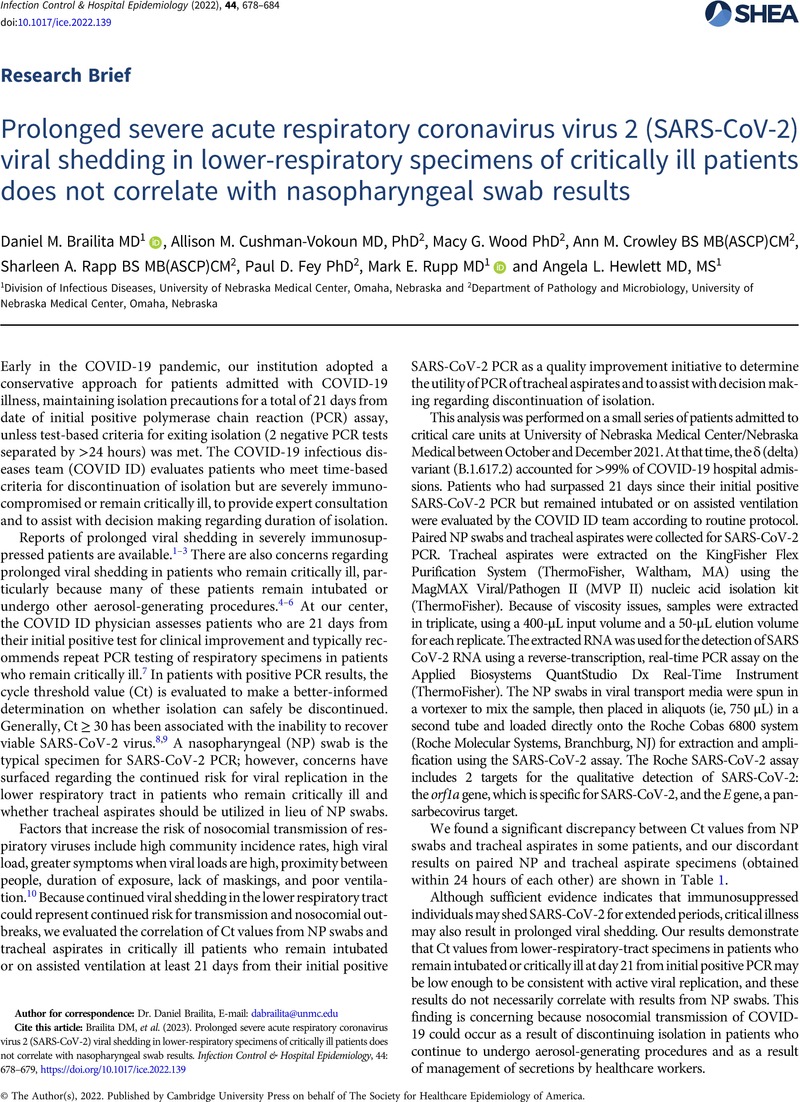Crossref Citations
This article has been cited by the following publications. This list is generated based on data provided by Crossref.
Acosta, Nicole
Bautista, Maria A.
Waddell, Barbara J.
Du, Kristine
McCalder, Janine
Pradhan, Puja
Sedaghat, Navid
Papparis, Chloe
Beaudet, Alexander Buchner
Chen, Jianwei
Van Doorn, Jennifer
Xiang, Kevin
Chan, Leslie
Vivas, Laura
Low, Kashtin
Lu, Xuewen
Lee, Jangwoo
Westlund, Paul
Chekouo, Thierry
Dai, Xiaotian
Cabaj, Jason
Bhatnagar, Srijak
Ruecker, Norma
Achari, Gopal
Clark, Rhonda G.
Pearce, Craig
Harrison, Joe J.
Meddings, Jon
Leal, Jenine
Ellison, Jennifer
Missaghi, Bayan
Kanji, Jamil N.
Larios, Oscar
Rennert‐May, Elissa
Kim, Joseph
Hrudey, Steve E.
Lee, Bonita E.
Pang, Xiaoli
Frankowski, Kevin
Conly, John
Hubert, Casey R. J.
and
Parkins, Michael D.
2023.
Surveillance for SARS‐CoV‐2 and its variants in wastewater of tertiary care hospitals correlates with increasing case burden and outbreaks.
Journal of Medical Virology,
Vol. 95,
Issue. 2,




